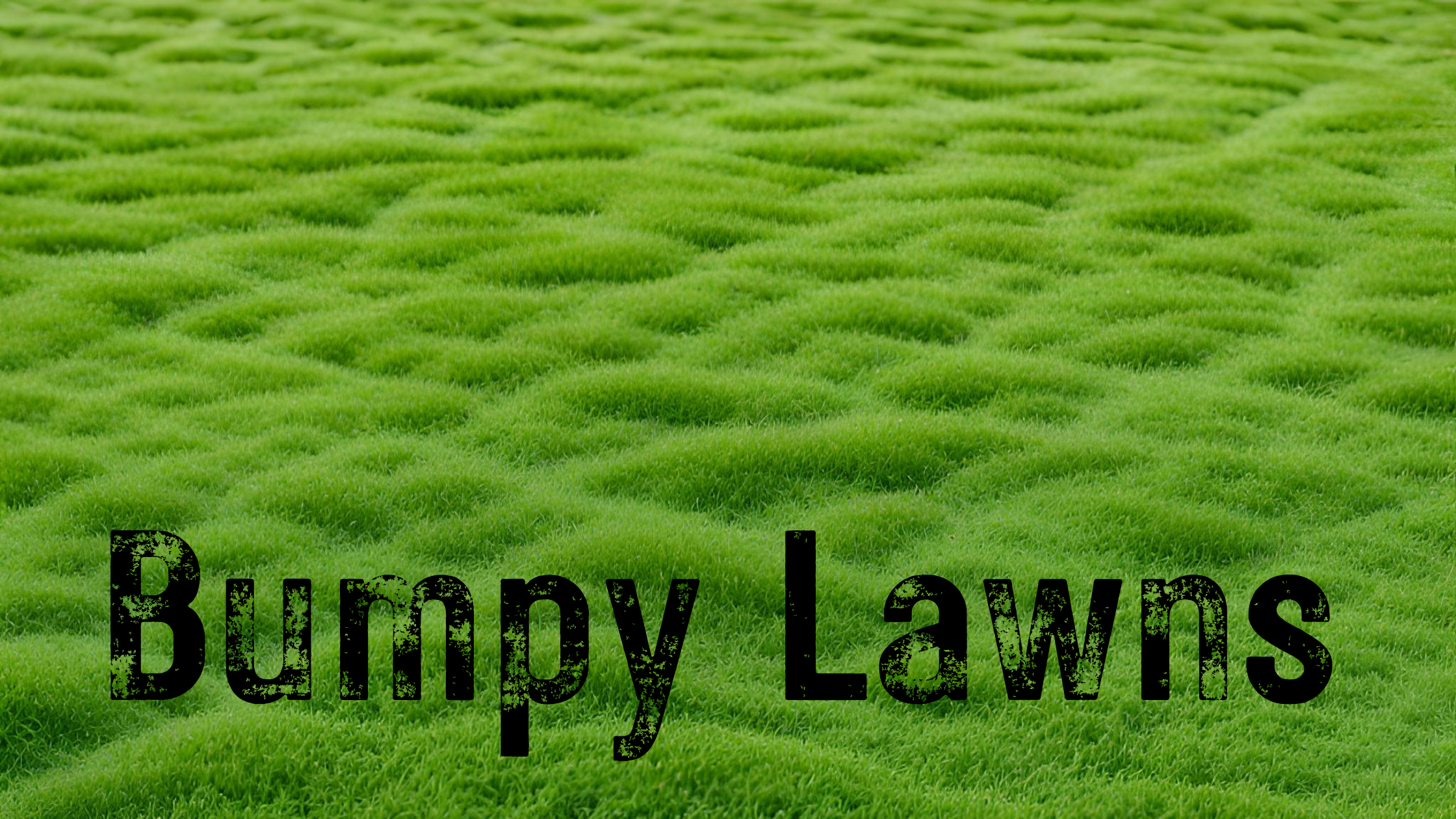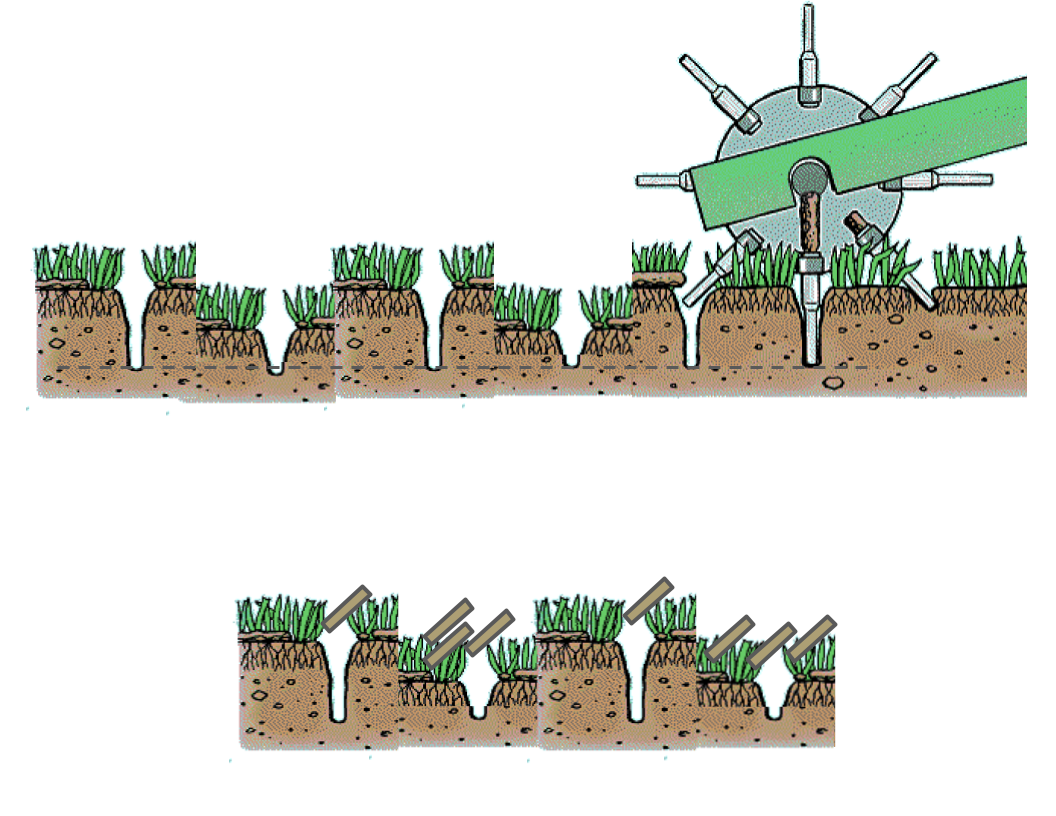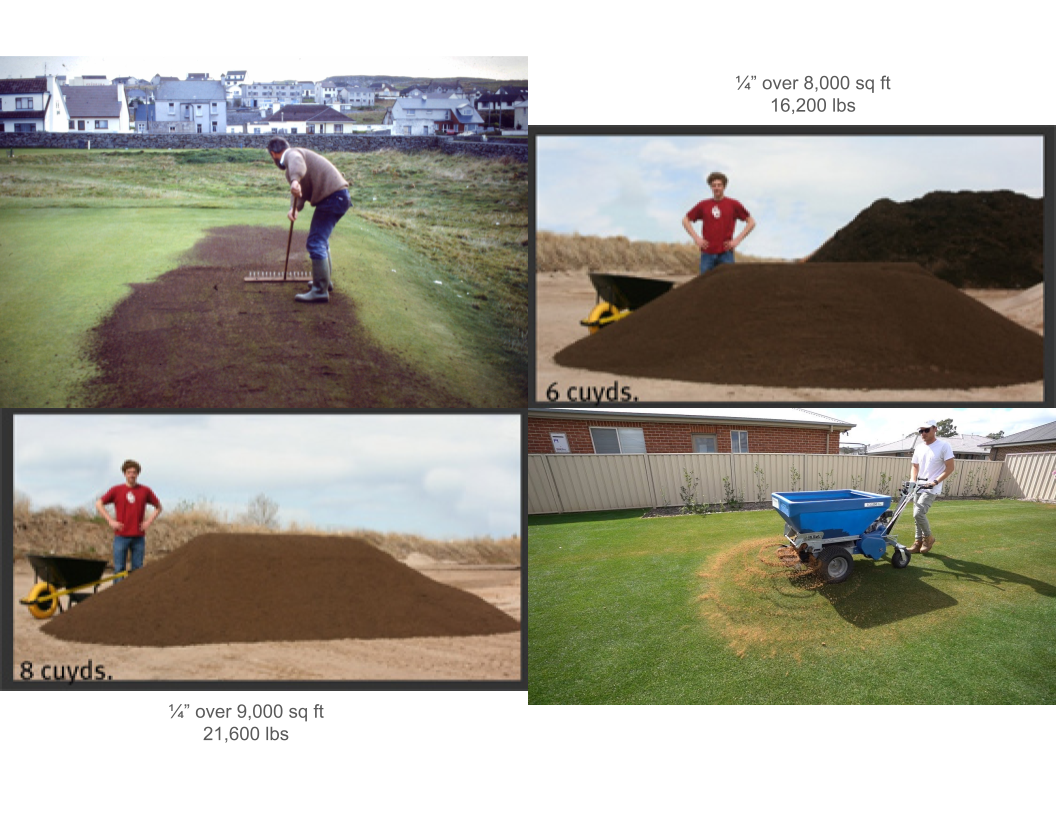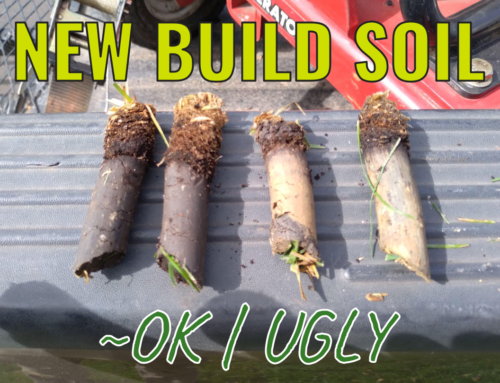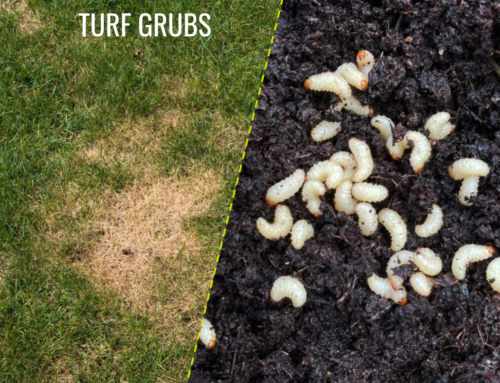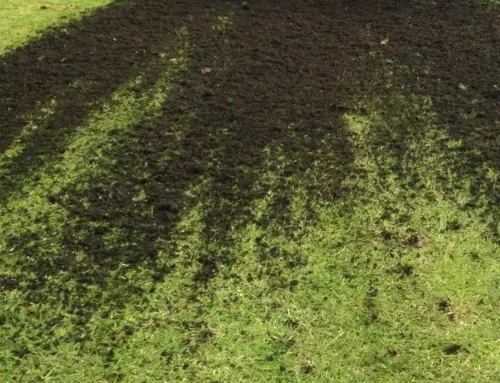Picture this: you step onto your lawn, dreaming of a smooth, green carpet (the Envy of the Neighborhood), but instead, you’re met with bumps and lumps. Like nails on the chalkboard while mowing! What’s the deal?
Topic Discussion
13 min – Perspectives from the University of Minnesota, Golf Industry, Lawn Professionals and Local “Expert Amateurs”
Causes
Soil Types: Different soils have different characteristics. Sandy soil? It doesn’t hold nutrients very well but it maintains a relatively flat surface. Rich, organic soil? Full of nutrients for great grass, but makes for bumps.
Frost: Spring frost is like nature’s rollercoaster for your lawn. As it comes and goes, your lawn can get all wavy, especially if your soil has rocks/debris that gets pushed to the surface.
Worms: Earthworms get active when there’s moisture. Golf-ball-sized castings will pop up anywhere a earthworm enters or exits the soil.
Mowing: Ever notice your lawn has tracks? That’s from mowing in the same direction all the time, especially around the edges. The mower compacts the same area over again.
Turf Types: Kentucky Bluegrass spreads out and keeps things smooth, but it needs a lot of water. Tall Fescue, though, can handle drought but it grows in tennis-ball-sized clumps/bunches. With our four years of drought we’ve had; that mat-like Kentucky Bluegrass has struggled and that tennis-ball like Tall Fescue has thrived.
Solutions
DO NOT: Roll your lawn.
Avoid the temptation to smooth out those bumpy lawns with a heavy roller. Sure, rolling might flatten things out a bit, but it’s like trying to squish a square peg into a round hole—it just doesn’t quite fit. In fact, rolling can do more harm than good.
When you roll your lawn, you’re not just pressing down those bumps, you’re also compacting the soil beneath. And compacted soil? Well, it’s like trying to grow a garden in concrete—it’s not exactly conducive to lush, green grass. Compacted soil smothers your turf’s roots, making it harder for them to breathe and grow. Eventually, you’re left with a sad, thin lawn that’s just begging for mercy.


Easy: Ignore it…
Don’t stress over those bumps. Honestly, no one else probably notices them. But if they’re driving you crazy because it feels like you’re navigating a minefield every time you mow, there are a few things you can consider.
First off, consider the quality of your soil. If it’s super fertile, it’s naturally going to be a bit bumpy. Think about it: trying to level out a perfect lawn on rich soil is like trying to iron out wrinkles in silk—it’s an uphill battle. And let’s be real, spreading a quarter-inch of sand over 8,000 sq ft means acquiring and moving 16,000+ lbs (~4+ cars!). And that’s just scratching the surface.
Now, if your mowing routine is creating deep ruts or making the bumps worse, it might be time to switch things up. After all, you’re not trying to host the PGA Championship in your backyard, right? So maybe try mowing in a different pattern to even things out a bit. Your lawn will thank you, and you might actually enjoy mowing again.
Medium: Aerate and Overseed
Aeration redistributing material to even out the bumps; more material is pulled from higher areas (the bumps) and less material is pulled from lower areas. Plus, as those aeration cores break down, gravity helps fill in low spots. See my expert drawing 🤪
Adding smooth-growing grass varieties through overseeding thickens your turf, making it more resilient. Aeration is incredibly complimentary to seeding success.
But here’s the catch: as your lawn gets healthier, it’s more likely to develop bumps (see soil types in causes). It’s a trade-off, but one that leads to a greener, healthier lawn. In theory the lawn is getting less bumpy but in practice, it’s likely not a noticeable difference for the bumps – more will come; much healthier thicker lawn though.
Hard: Topdressing
Want your lawn to be smooth like a golf course? We’re talking feet of sand… However, putting it down at more than 1/4″ at a time can suffocate the existing grass. 1/4″ of sand will make a noticeable difference in smoothness – especially if you use a riding mower. But to have a consistently smooth lawn; you’ll need that 1/4″ topdressing of sand to be a regular part of you lawn care regime… Like multiple times per year. Remember how the healthier you make you lawn the more it’s going to naturally be bumpy? For a typical new development lawn; that’s 16,000+ lbs of sand per time! That’s a pretty much impossible to do manually (wheel barrow and shovel) or it’ll require serious specialized equipment to load and spread that amount of product $$$. For most; it’s not practical – for the determined; it’s still an option.
You can tailor your mix from pure sand (angular or engineered sand deters earthworms!), to a mix of sand an soil, sand and compost, etc. depending on what you’d like to do. Soil/compost won’t naturally smooth the lawn and will require raking to level – more work.
If topdressing; consider pairing it with aeration and overseeding prior. You’re going through all the work; might was well do the full effort.
See our other Post about Topdressing

